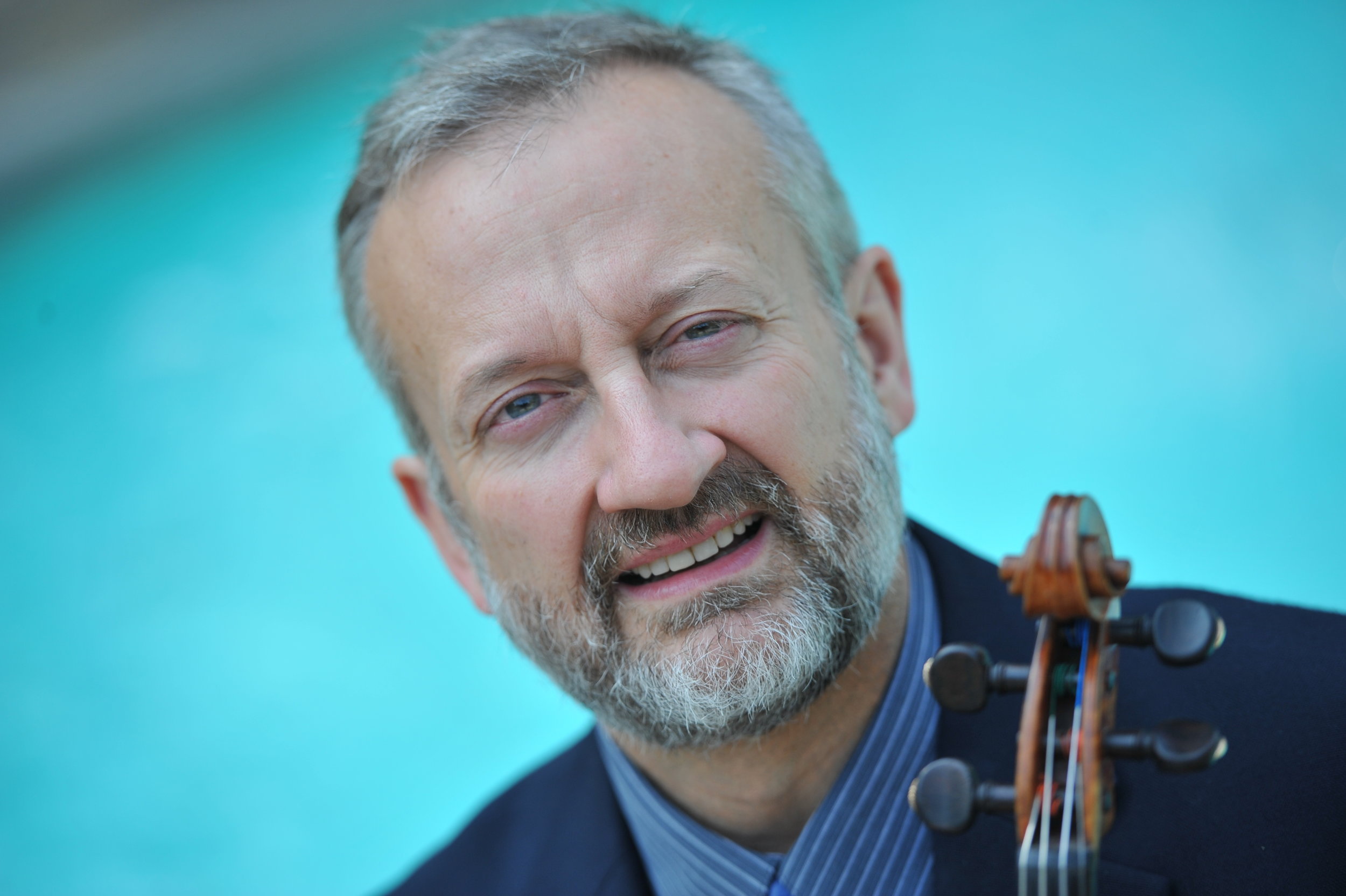Doyle Armbrust: Hey LJ, I love Zin zin zin zin just as much today as I did when you first wrote it.
LJ White: Thanks!
DA: From what you state on your website, it seems like this open-arms approach to sound is still at the heart of what you are up to as a composer. Does it look any different these days than when you wrote Zin?
LJ: I wrote Zin over six years ago now, and I can explain it all better now, but I think the motivations are still the same. I like to examine and question genre barriers, and I do it through considering all of the elements of music under my control – pitches, rhythms, timbres, textures, phrasing, articulation, and on and on – independently of each other and with as open of a mind as possible. In Zin, for example, there are timbres that would fit in at Darmstadt, there are motivic and rhythmic elements from hip hop, there’s a way of thinking about vertical spacing that’s informed by spectral music, and there’s comedic timing in the structure and a rhetorical, onomatopoeic communicativeness of gesture that are reminiscent of opera buffa or cartoons.
There’s no reason all of those things can’t make sense together, if they work toward a singular purpose or feeling for the music, a singular idea that interests me. The reason I’m interested in breaking down these lines of genre, I think, is that as a queer trans person, I’ve had to continually make lots of small decisions in order to build a fitting identity outside of the big binary-gender categories that would have otherwise made those kinds of decisions (what to wear, how to speak, etc) automatically for me. And I like to try and build a world, modeled in music, where the full spectrum of decision making is open in all cases, where we all can, as much as possible, freely make decisions for ourselves.
DA: This season, we are aiming to have composers tell us what aspects of their identity they want front and center, rather than whatever the current narrative about them may be. If we were to write up a one-sentence bio for you in one of our programs, what would be the lede, as of this moment?
LJ: This is a really interesting question. Thanks for the thoughtfulness in striving to represent the composers you’re working with the way we want to be represented.
It seems like there’s two parts to it: 1) Tell us what aspects of your identity you want people to understand about you, or associate with you, and 2) What should your one-sentence bio be? In my case, a one-sentence bio wouldn’t encompass issues of identity directly. The first sentence of my bio (which, for composers, can end up being used as a “one-sentence bio,” and is something we agonize over) says that my music is “direct, focused, and socially relevant” and “assimilates a variety of influences.” This is what I think my work does, in a nutshell. However, identity issues are important to why my music has these priorities, as I’ve described. I want people to know that I’m transgender. My gender identity is something that has strongly informed my work, in tandem with other aspects of myself, and it probably it is a large part of the “current narrative” of me that is out there, cultivated by myself and others. I also care about LGBTQ+ visibility, so it’s important to me to be open. That said, my gender identity is definitely not the full picture, and probing my music would uncover a lot of other features based on an inseparable tangle of identity-based, interest-based, and personality-based traits, one which I don’t think can be summed up fairly in a sentence that would function as a composer bio.
All of this is to say, I guess, that you can feel free to tell audiences that I’m trans and that this informs my music, but let’s make space for this information to be an organic response to questions about why the music sounds the way it does and how I understand my work, along with any other relevant information that could pop up (like the amount of time I spent watching cartoons and MTV as a kid, my interest in language and communication and interpersonal dynamics, etc.)
DA: As a trans composer, that aspect of your identity is probably going to surface pretty often. Is that something you embrace, or is it challenging to automatically be compelled to be an advocate?
LJ: It’s complicated, but I do embrace it, and I hope I’m always an advocate. As I was alluding to, I think my gender identity is something that’s foundational to the way that I think of and write music, whether or not the music deals directly with LGBTQ+ issues – for all of us, our art comes from who we are – so I’ve gotten comfortable talking about it, on my own terms. And I often do want to engage those issues explicitly in music. I feel that there’s been a good balance: I’m getting to write those pieces close to as frequently as I want to, and I’m also getting a lot of opportunities to write pieces about other things.
When I write LGBTQ+-focused music, I tend to write it for friends and close colleagues in the contemporary classical world, who I know support me, and who I know think carefully about gender and other issues of identity for themselves. That way, we’re all connecting to the music with passion, and I don’t feel isolated or other-ized. There are so many important issues to grapple with right now, in 2019 – gender is just one of all of the things we’re collectively taking on. At times, I’ve turned down opportunities where that collaborative, world-improving, inclusive spirit seemed to be missing: interviews that felt tokenizing, or commissions that were too prescriptive and inauthentic to my experience, or situations where I wasn’t sure I trusted the presenting organization to get it right. But I’m thankful that an abundance of fruitful collaborations has made those experiences irrelevant, in my case.
DA: We chose you to re-imagine one of our favorite tunes, My Pal Foot Foot, because 1) We love your work, and 2) because we figured a tune this fringe would be right up your alley. Do you remember your reaction when you first heard the original track?
LJ: I was like, “This is bananas. And I need to listen to this whole album a lot.”
DA: One thing I find so compelling about this tune, and The Shaggs in general, is that they are unabashedly doing their own thing. I think the “other-ness” is what draws me in. Do you find yourself with any similar feelings of camaraderie with the music-making in this way?
LJ: I didn’t really experience it in this way, honestly. I think what was compelling about it for me was the improbable musical material and the seeming belief among the band members that they were “doing it right,” doing what musicians do – the dutiful rudiments in the drum part, the simultaneous earnestness and wackiness of the lyrics, etc. I geeked out on things like the really complex rhythmic and pitch material and amazingly weird harmonic and lyrical structure of the song, which coexist really interestingly with that dutiful vibe that I felt I was picking up on. To me, it felt more like a misguided attempt at conformity than a rebellion.
The connection for me might be in the ways that I’ve tried but spectacularly, cluelessly failed to conform to things like gender roles in the past. I’m not sure how to say this without being condescending towards the band, though.
DA: What was your lightbulb moment, when you were writing your cover?
LJ: I think it was figuring out how to do something original with this music without having it feel like I was just making fun of the Shaggs because they’re out of tune and out of time, etc. I had several false starts before I started to bring in a bigger variety of material and to, in a way, poke fun at all of it by juxtaposing it all with references to opposing styles and associations. This includes the references to my own previous music that are in the piece. I had to discover that the music needed more territory to cover in order to not take itself too seriously.
DA: You’re now a teacher of composition. Do you find yourself offering your students specific advice in terms of how much of themselves, personally, they should invite into their music?
LJ: I want my students to write really personal music, by learning how to control all of the musical elements at their disposal toward their chosen goals in a musical work, and also by being thoughtful about themselves and what’s important to them, so that they can infuse their music with their own aesthetic and extra-musical values. This doesn’t mean that they should all write explicitly confessional or identity-focused music if that isn’t what feels right – it’s really about the way of constructing music more than the music’s stated topic or purpose. I want them to make decisions in a way that’s individualized and thoughtful and connected to what they’ve been able to observe that they like or believe in or care about. I want them to think more deeply than conforming to any one style blindly, and to write music that no one else could write but them.
It’s something I put a lot of thought into.














